Measuring What's Really Happening in the Workplace in 2024
In today’s increasingly digital and often remote working environment, software can help organizations get a better handle on how their teams are tackling challenges and discover ways to fill in the gaps. The highest performing teams are 2.6 times more likely to be investing in performance management software, according to Lattice’s State of People Strategy Report. But of those not using such software, 27% are unsure of how to begin and 22% are even concerned about the cultural implications of doing so.But what does an average day of digital work look like? Does worker behavior vary during a typical workweek–or throughout the year? Workforce analytics company ActivTrak drew on three years of data, from more than 135,000 employees across 1,000 companies to provide an examination of workplace behaviors in its annual State of the Workplace Report.Among the findings: workdays are shorter and productivity remains steady. But at the same time, disengagement is growing, which may lead to problems of underutilization but also presents opportunities to make better use of untapped workforce capacity.In a From Day One webinar webinar, leaders from ActivTrak spoke about their critical findings related to productivity, burnout, technology, and AI usage trends. They discussed industry-specific best practices and benchmarks so you can take action and boost productivity across your organization.The State of the Workplace The goal of the report was “to reveal the current state of work and how organizations can better anticipate and plan for the future,” said Sarah Altemus, manager at ActivTrak’s Productivity Lab. “Notably, we found that workdays are shorter and productivity remains steady. Burnout is in decline, which should boost positive engagement and utilization. However, we did see that disengagement is growing, possibly due to previously burned-out employees who are increasingly checking out,” said Altemus.The study, which covered 2021 through 2023, found that employees were about eight minutes per day more productive in the first half of 2023 vs. the second half. This means that if an organization with 1,000 employees was able to maintain those earlier productivity levels throughout the whole year, it would gain an additional workload capacity of 18 full-time employees, worth approximately $1.1 million, assuming each employee has a $60,000 salary.Employees are also finishing their tasks in less time. The workday got a full 15% shorter from Q1 2021 to Q4 2023, dropping from nine hours and 52 minutes to nine hours and five minutes. Time spent on collaborative activities such as chat and messaging increased slightly. Meanwhile, total digital activity, productive time, and focus time stayed consistent.Sarah Altemus, ActivTrak’s Productivity Lab Manager, led the webinar (company photo)Efficiency, measured in productive time in relation to total time, remained steady. This, Altemus says, is a good thing. “We were creeping into almost 10 hours of ‘on’ connected time a day in 2021. I think a lot of that was really performative productivity, people wanting to be constantly online. And so it's encouraging to see that shift to a more sustainable period of time.”How can employers make the most of this trend? The ActivTrak Productivity Lab suggests utilizing workplace analytics software to boost performance management, enhance employee productivity, and maximize workforce investments. Leaders should continuously analyze current and long-term data to pinpoint gaps and obstacles, and identify employees who may benefit from additional training.A disengaged employee is defined as one who spends greater than 75% of their year in an underutilized state. Distressingly, they found that 20% of employees were disengaged due to underutilization, up 67% since 2021. Meanwhile, 7% of employees risked burnout due to overutilization. 4% of employees in 2023 worked on weekends, down one percentage point from 2022. Often, a small, overworked group of employees is taking on too much.Megan Moller, productivity enthusiast at ActivTrak, says multi-tasking and context-switching is often the culprit. “That can be exhausting,” Moller said. “And so when you are doing that every single day for a period of time, you can get burned out.” Leaders need to assess and track employee utilization to help right the balance.If you don’t find the right balance, the results can be costly. 27% of employees risk attrition due to burnout or disengagement. Employees who are burned out are more likely to leave. And ActivTrak calculated that for an organization with 1,000 employees, a workload imbalance that leads to attrition equals a potential loss of 70 employees, valued at $2.1 million, based on 20% annual voluntary turnover and replacement costs equal to half of a $60,000 annual salary.To combat this, Altemus suggests gathering context through team meetings and one-on-one discussions to identify issues and offer targeted support to employees who are overburdened or underutilized. And leaders should encourage employee development by demonstrating how their daily work contributes to the organizations’ broader strategic goals.AI AdoptionArtificial intelligence is being adopted in the workplace – and fast. 22% of employees used AI tools in 2023, an increase of 50% from Q1 to Q4. While AI usage increased, however, ActivTrak found there was no apparent impact on productivity when comparing employees who used AI tools to those who did not. So that freed up time was not necessarily put to good use.Factors such as industry, company size, and workplace environment influenced AI tool adoption, but generally about one in 10 employees used AI tools. Remote workers were 5% more likely to use AI. 115 unique tools were used, with the free-to-use ChatGPT being the most popular.While the true role of AI in the workplace is not necessarily crystal clear, it’s obvious that AI is not going away. Altemus suggests striking a balance: train employees on effective AI use without solely relying on it. Promote a culture of experimentation and learning by encouraging employees to try new approaches and share what they learn. Offer guidance to ensure AI usage aligns with your organizational goals, and always be mindful of protecting sensitive or proprietary information.A Productive FutureIn terms of productivity, Altemus advises transferring best practices from earlier months to boost output and yield significant gains in the latter half of the year, when productivity tends to decline. To combat burnout and disengagement among employees feeling an unbalance in workload, try redirecting resources to support targeted training and growth opportunities. And with AI use on the rise, there is a need for clearly defined policies around appropriate use to maximize the benefits.Leaders can better understand the current state of their specific workforce using analytics tools, and add context with employee sentiment data gained through pulse surveys. They should always communicate their findings and take action when it’s relevant.Editor's note: From Day One thanks our partner, ActivTrak, for sponsoring this webinar. Katie Chambers is a freelance writer and award-winning communications executive with a lifelong commitment to supporting artists and advocating for inclusion. Her work has been seen in HuffPost and several printed essay collections, among others, and she has appeared on Cheddar News, iWomanTV, and CBS New York.





